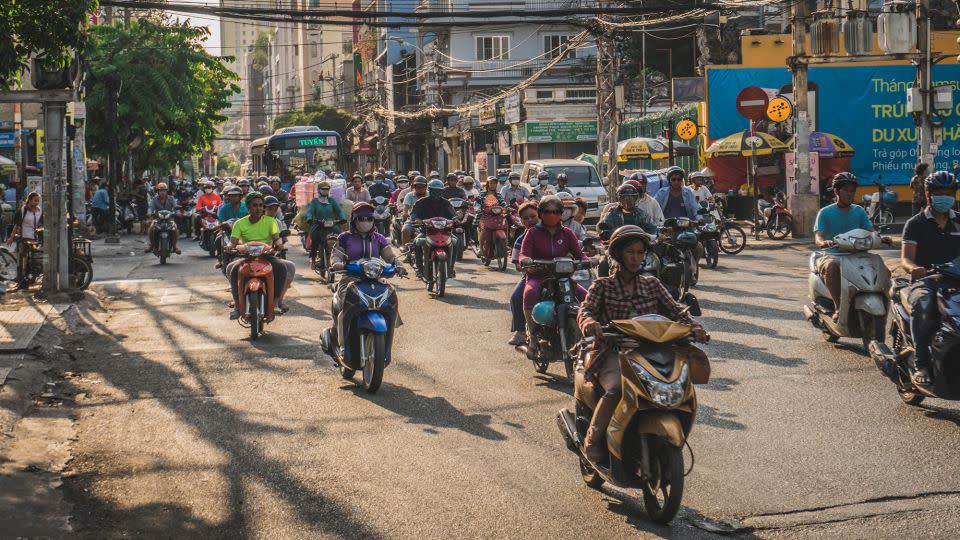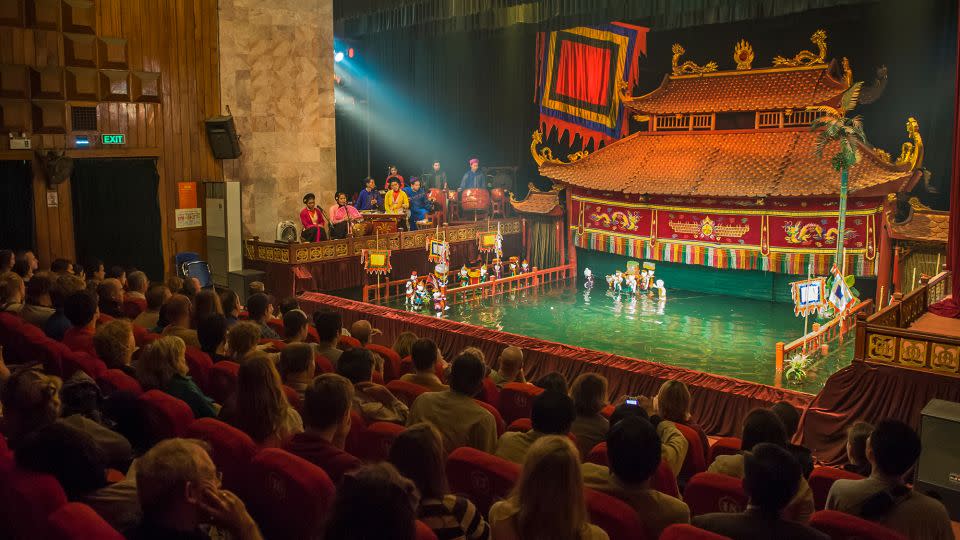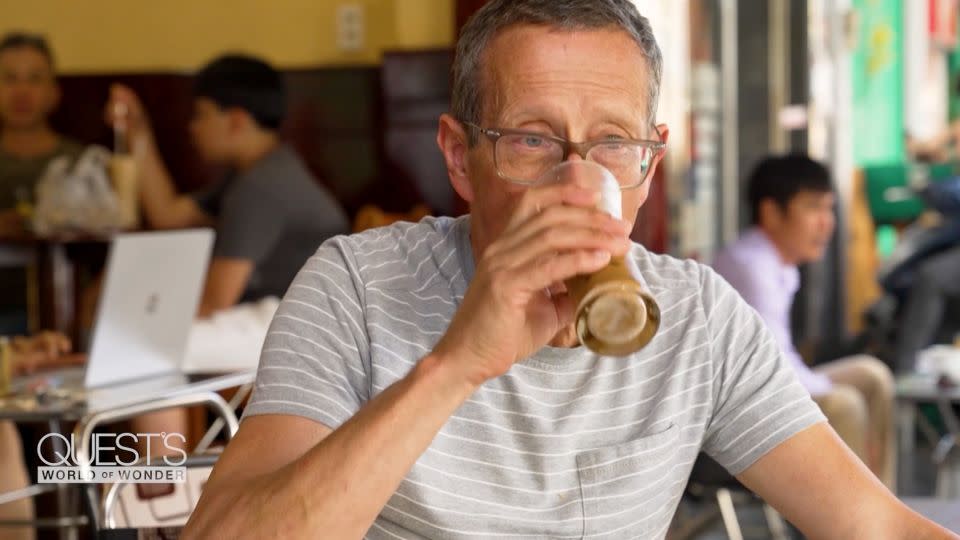Motorbikes whizzing in all directions. Street vendors offer their wares everywhere. To the untrained eye, and especially to the newly arrived tourist, it appears as if chaos reigns.
This is Ho Chi Minh City, the commercial heart of a resurgent Vietnam. It is a city subject to constant change. And yet underneath it all there is a deep love and respect for tradition and the past. You just have to know where to look.
As journalist and author Graham Greene once said, “When you come to Vietnam, you understand a lot in a few minutes. But the rest has to be lived.”
Greene knew it better than most. His classic ‘The Quiet American’ remains a bestseller here, available at seemingly every souvenir shop you come across. Greene made four trips to the country as a foreign correspondent between 1952 and 1955 and saw up close the transition from a French colony to an independent state, making him well placed to cover the American War, as it is often called there, that soon followed. understand.
This sense of sensing the past in the present is felt immediately upon arrival. It could be Ho Chi Minh City. But for many residents it is still Saigon, the name that existed before the victory of the city’s eponymous hero in the 1970s.
“It is so, it is!” says our guide Po when asked if it is still okay to use the famous former name.
“A lot of things are still called Saigon,” he says. “We have a Saigon River, we also have Saigon beer.”
Concerns about nomenclature put to rest, Po prepares us to embrace the crazies. As CEO of a local tour operator, he knows his way around the city. And there is no better way to get around than by motorcycle.
Going on two wheels


According to a 2022 C40 City ReportHo Chi Minh City is home to about 7.3 million motorcycles. Considering the population is 8.9 million, you know what to expect when you get on here and rev your engine.
However, there is a method to the madness. If you sit behind Po, you can see how everything works. Riders choose a path and somehow manage to get through it. If you come here all year round, you will see incredible things transported on two wheels: boxes full of car parts, bags of goldfish miraculously stacked on top of each other and even entire families, small children sitting between adults for safety are wedged. For the uninitiated, it can make for a terrifying yet thrilling spectacle.
“Sometimes the traffic jam got bad, they just use the sidewalk to run faster, that’s all,” Po smiles as we stop and almost get run over while trying out a Ho Chi Minh institution: a curbside hairdresser.
For one dollar per shave and two dollars per haircut, these barbers have been here for generations. Both loyal customers and curious tourists can take a seat and freshen up while the city continues to go about its business.
By taking the time to sit here, there is room for reflection. The cacophony of Ho Chi Minh is both life-affirming and exhausting. A sensory overload from all directions, which means the need for something more soothing. Fortunately, there is plenty of that available.
‘This is the main character of the show’
The Saigon Opera House is a classic example of how modern Vietnam has found a way to combine its past with the present. Built by the French in 1900, this striking building could have been lifted from the streets of Paris. After serving as the National Assembly for South Vietnam between 1956 and 1967, it was not used as a theater again until 1976, after which it was known by its official name of the Municipal Theater of Ho Chi Minh City.
Nowadays there are performances of it The Bamboo Circusa Cirque du Soleil-style show that tells the story of modern Vietnam with the eponymous equipment, used throughout the country for everything from scaffolding to fishing rods.
“It’s very difficult, but very flexible,” says Tuan, the show director who took the time to explain how his team created their unique and brilliant show. “And this isn’t just any prop. This is one of the characters, the main character, of the show.
It’s breathtaking to watch these remarkable performers climb the bamboo as scenes from Saigon play out, from construction workers working hard to motorbikes speeding in all directions.
But trying to do it yourself is a completely different matter. For the untrained, climbing and moving on these poles is impossible, an insight into how heavy they are, but also how hard the land works every day. In fact, The Bamboo Circus is such a success that it is on a world tour, bringing the magic of Vietnam to anyone lucky enough to get a ticket.
Ancient beliefs, values and traditions


If The Bamboo Circus speaks of the grace, elegance and beauty of Vietnam, so does the water puppetry. This art form is performed by skilled craftsmen, who maneuver puppets while they are up to their waists in water, and was a cornerstone of royal entertainment for hundreds of years.
Performing in waders in sweltering temperatures requires strength and experience, something that puppeteer Tran has in spades. Watching him at work makes you realize how important preserving history and sharing culture is for the people of Ho Chi Minh City.
In many ways it is a dynamic, forward-looking place. But it is also a place proud of its past and heritage, and where residents are clearly keen to keep the old ways alive, even in the face of change.
This energy is on display at the Suoi Tien Theme Park, a place that celebrates and educates Vietnamese history and culture, a unique and unique take on the kind of place that so often feels formulaic.
“Suoi Tien is a fairytale theme park,” explains our guide Po. “It contains all the culture and tradition of a thousand years of Vietnamese customs.”
Everything here is based on ancient beliefs, values and traditions. Attractions tell the stories of Âu Cơ, a mountain snow goddess seen as the mother of Vietnam, her husband Lạc Long Quân and the great battles between the traditional mountain god and the river god.
It’s both a history lesson and a fun day out, although the children’s beach with its ancient god structure and the inevitable rollercoaster certainly ensure you get some classic theme park thrills during your visit.
Put a pep in your step


Back in the heart of Saigon, there’s still time to try another tradition, this one a little more elaborate than curbside shaves, circus tricks and water puppetry: weasel coffee. Vietnam is the second largest coffee exporter in the world after Brazil, its robust beans are in high demand. But to properly taste the most famous coffee, you really need to find one of the best coffee houses in Ho Chi Minh City.
“They feed the weasel fresh coffee beans,” Po says, chuckling, “And then… he poops out… he’s certified, you know, good quality!”
The beans are collected, washed and disinfected, then made into coffee and not sold at a high premium. The result is a rich, full-bodied cup that’s also packed with caffeine, even though the way the beans are handled is unlike almost anything else on earth.
It’s the best way to gain some energy before a day exploring the traditional alleys and markets that are a highlight of this great city.
“They collect the real stuff here,” says Po as we browse memorabilia from the Vietnam War, something that can feel like ancient history today, the infamous evacuation of the American embassy here that took place almost fifty years ago. This market is a strange mixture of karaoke bars, trinkets and items from that war for sale: photos, medals and dog tags of men who were lost and never found.
Outside this bizarre place, traditional culture erupts once again as young children fly kites in the summer heat, just as they have done for generations. It reminds us how the past erupts here when you least expect it.
This is a place where great emphasis is placed on simplicity and beauty in the everyday, a place where grace and tenacity flourish in every moment.
For more CNN news and newsletters, create an account at CNN.com







